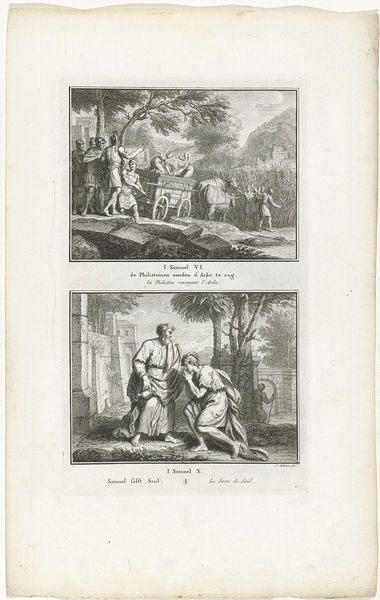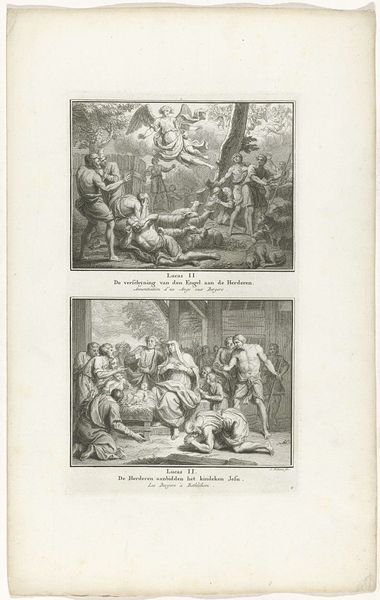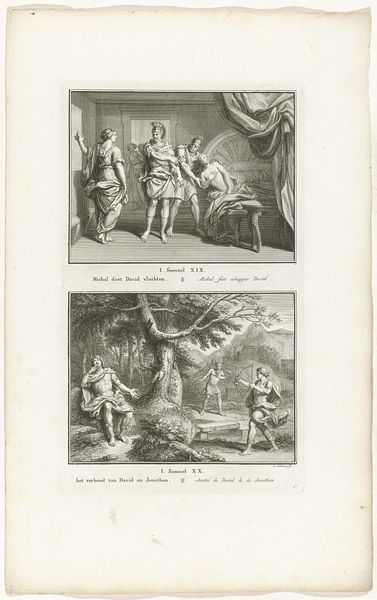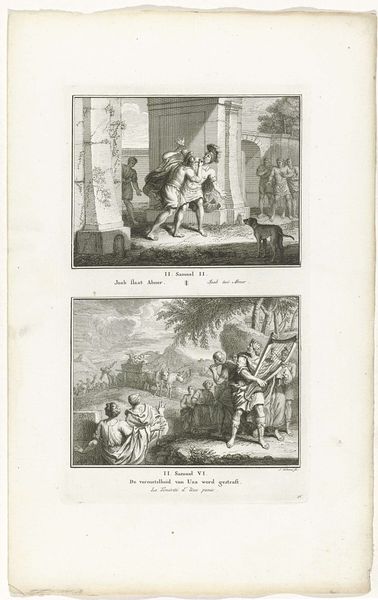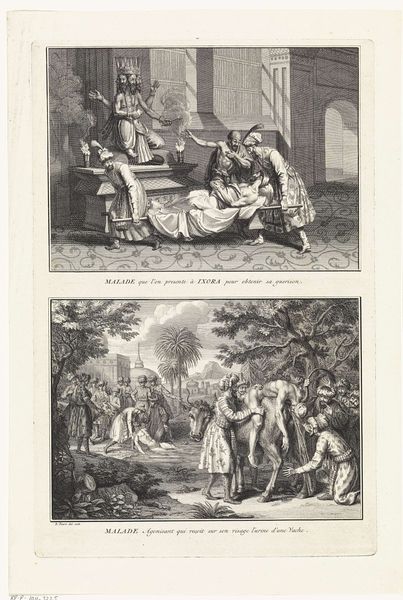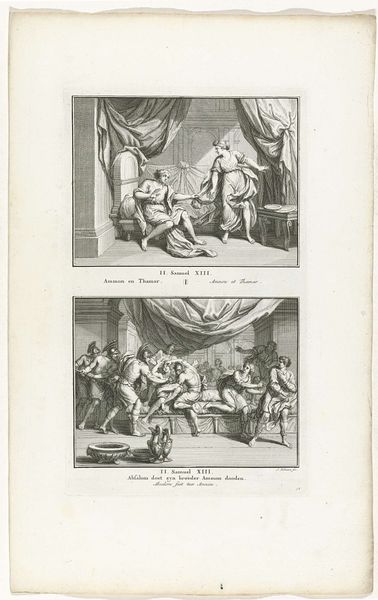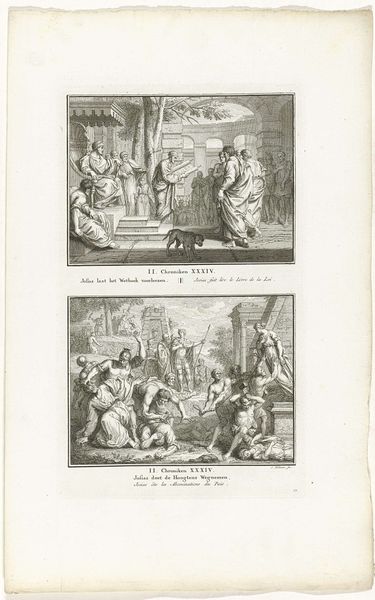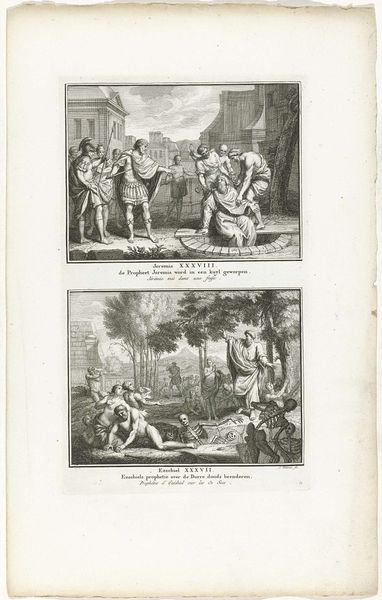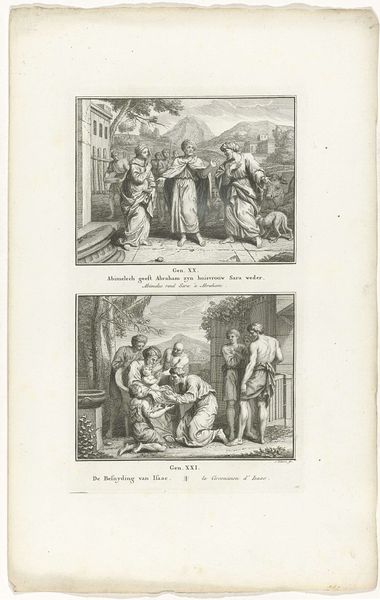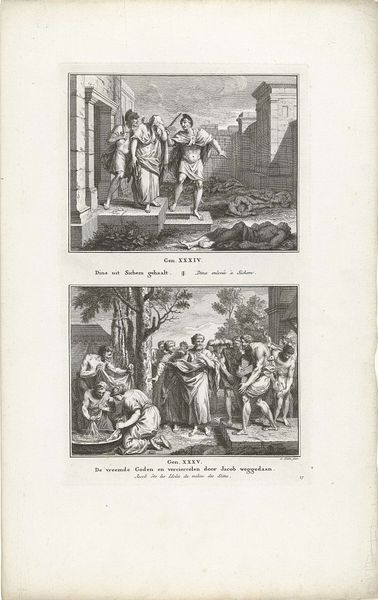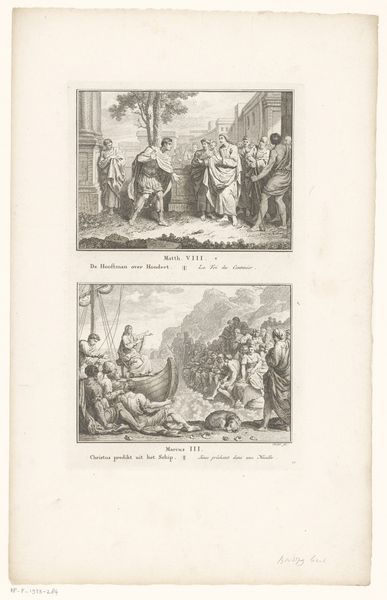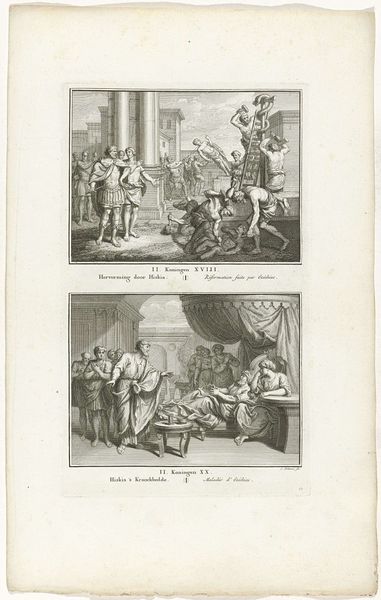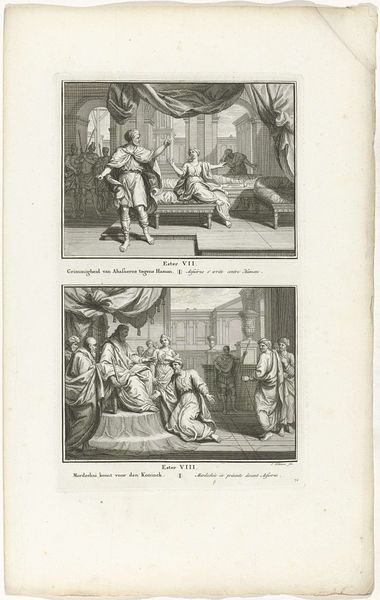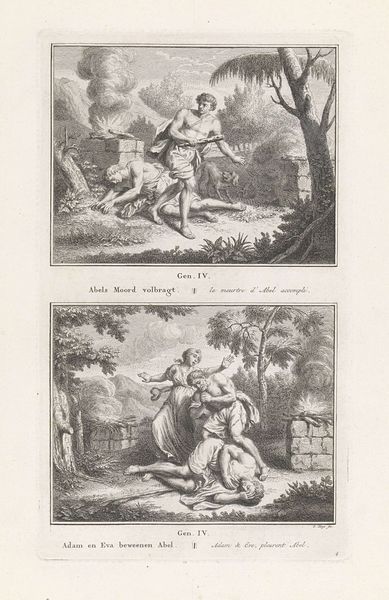
Job ontvangt slecht nieuws van een boodschapper en Job op de mesthoop 1791
0:00
0:00
Dimensions: height 326 mm, width 195 mm
Copyright: Rijks Museum: Open Domain
Editor: This is "Job Receives Bad News from a Messenger and Job on the Dunghill," an engraving by Jacob Folkema from 1791, currently held at the Rijksmuseum. It’s quite stark, with contrasting scenes. What do you see when you look at this print? Curator: I see a fascinating confluence of production and social commentary. Engravings, like this one, were often commissioned for mass distribution. It makes me think about the means of producing and disseminating religious narratives in the late 18th century. The act of reproducing stories for wider consumption transforms them, right? Editor: Definitely. So, you're saying the medium itself is significant. How does that relate to the content here, the story of Job? Curator: Exactly. Job's suffering is almost commodified. It becomes an image, a reproducible asset, a vehicle of religious meaning consumed by the masses. Think of the labor involved. Someone designed this image, someone engraved it, someone printed it, someone sold it. All that labour focused on depicting, and therefore marketing, this story of profound human misery! How does that resonate with the viewer? Editor: That’s…a bit unsettling when you put it that way. Is it fair to say, then, that by turning Job's story into a mass-produced item, the print almost desensitizes us to his suffering? Curator: It certainly raises the question. Are we truly empathizing or simply consuming a pre-packaged version of suffering? The printing techniques used – the specific choices made in line, composition, and reproduction numbers – each influenced its reach, accessibility, and the experience of the viewer encountering this tale. Considering materiality helps unearth those social dynamics. Editor: That's a powerful observation. I hadn’t considered how the print's very existence as a commodity affects our engagement with the story of Job. Curator: Seeing art through a material lens definitely opens new avenues for inquiry and challenges the separation of "high" art from craft or from everyday forms of communication.
Comments
No comments
Be the first to comment and join the conversation on the ultimate creative platform.
